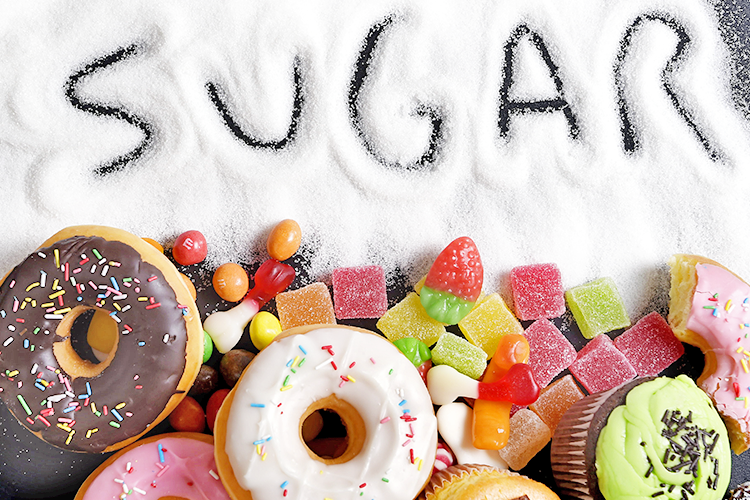Blog
Addicted to sugar
 Sugar is everywhere. We love it, and unsurprisingly. It seems the sweet stuff has some seriously addictive qualities.
Sugar is everywhere. We love it, and unsurprisingly. It seems the sweet stuff has some seriously addictive qualities.
Increased consumption of sugar stimulates the reward pathway in the brain, increasing dopamine levels and sending you into the pleasure state (albeit only temporarily). The sugar high may have much in common with certain substances that induce dependence.
Neurons and dependency
Such substances have an affinity for the nicotine acetylcholine receptor (nAChR). The receptor has been found to have an important role in alcohol consumption, nicotine dependence and cocaine craving,1 and now it seems sugar addiction.
There is a pharmaceutical drug called varenicline, a nAChR partial agonist, meaning it modulates the dopamine reward pathway, so in the long-term the craving and therefore consumption of the addictive substance is reduced.
A recent study out of Queensland University of Technology thought to trial the impact of varenicline (a.k.a Champlix) on increased sugar consumption (and addiction).2
And it worked!
Sucrose consumption reduced with medication (albeit only in animal studies at this stage), even when presented with the choice of drinking plain water or sucrose sweetened water. The results were also supported by trialling other nAChR partial agonist brands.
Fascinatingly, they found the more sucrose consumed over a longer period increased the number of α4β2 nicotonic receptors, and reduced the number of α6β2 nicotonic receptors in the area of the brain associated with reward – a similar change found in nicotine addiction.
Whilst the mechanism for the alterations in receptor number is not fully understood, it implies the longer the increased sugar consumption, the more likely you will be addicted to sucrose, craving ever-more dopamine production.
Great news?
A pill to quit sugar addiction? Sure! This seems like great news. At least, for those who are really, truly in trouble with their health and weight it could be, because as we know, excess sugar consumption has been linked to a myriad of health issues and obesity.
But we also need to get back to basics.
We have to ask, how did we get to this place to begin with? Seeking a change to the cause, and not band-aiding the symptoms, is where real, long-lasting change lies.
Our taste for sugar
Sugar consumption is increasing, especially in the form of sugar-sweetened beverages (regardless of its form, be it soft drinks, sports drinks, energy drinks or flavoured milks). And we have seen a rise in various health conditions, including type 2 diabetes, in areas with increased exposure to and consumption of sugar.3
Ideally, we want to curb the intake of added sugars by altering our taste buds to be more sensitive to sweetness. This way we can reach for something more nutrient dense and without the negative health effects.
Let’s learn to appreciate the subtle sweetness offered in a variety of other foods, for example cinnamon, vanilla, berries and coconut, which can be truly amazing!
No quick fix
Essentially, what this means is this drug may be able to be used for those in extreme trouble with excessive consumption of sugar, especially following failed attempts through alternative strategies to wean themselves off.
But it should not be treated as a quick fix. Old habits die hard, and we can help ourselves long-term by altering our eating habits, using wonderful spices, fruit and vegetables to satiate our desire for sweetness.
References:
- Crunelle, CL, Miller, ML, Booij, J, & van den Brink, W 2010, ‘Review: The nicotinic acetylcholine receptor partial agonist varenicline and the treatment of drug dependence: A review’, European Neuropsychopharmacology, vol. 20, pp. 69-79.
- Shariff, M, Quik, M, Holgate, J, Morgan, M, Patkar, OL, Tam, V, Belmer, A, & Bartlett, SE 2016, ‘Neuronal Nicotinic Acetylcholine Receptor Modulators Reduce Sugar Intake’, PLoS ONE, vol. 11, no. 3, pp. 1-15.
- Basu, S, Yoffe, P, Hills, N, & Lustig, RH 2013, ‘The relationship of sugar to population-level diabetes prevalence: an econometric analysis of repeated cross-sectional data’, Plos One, vol. 8, no. 2, p. e57873.











